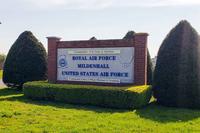HELMAND PROVINCE, Afghanistan — "Flat tires, blown transmissions, and even vehicle accidents are common occurrences in the harsh environment and inherent danger of a war zone,” said Staff Sgt. Brendan H. Chamburs, company gunnery sergeant, Support Company, Combat Logistics Battalion 4, 1st Marine Logistics Group (Forward). “The wrecker section has the responsibility to maintain convoy momentum when things go wrong.”
Cpl. Adam R. Tornatore, a 26-year-old native of Syracuse, N.Y., is one of the wrecker operators tasked with making sure that each vehicle in the convoy makes it to its destination.
Tornatore’s technical expertise and ability to manage the stress and responsibility of such an important billet are the reasons that he earned his nickname, “Duty-Expert.”
“Tornatore has been called upon to recover 80 vehicles so far,” said Chamburs. “He has built a reputation for being the ‘go-to’ Marine for unique and difficult recoveries.”
According to Chamburs, Tornatore has used his extensive mechanical knowledge to conduct field repairs on vehicles and mine rollers.
“When the battalion was in Korea [training], I was in wrecker school,” said Tornatore. “I asked every question I could think of and learned everything I possibly could. This is not a duty you want to take lightly because of how crucial it is.”
The wrecker operator billet and responsibility that goes with it suits Tornatore well.
“I love this job. [Motor Transportation] was fun, but as a wrecker operator you are more of an asset to the convoy,” said Tornatore.
Tornatore appreciates the chance to be in the center of the action.
“I like being ‘boots-on-the-ground’ and seeing what happened [to the downed vehicle] and where it happened,” added Tornatore. “Every once in a while you get small stuff like a downed mine-roller that is generally the same every time, but once you get into battle damaged trucks, it is different every time.”
This experienced wrecker operator believes that the unique challenge presented by each vehicle he recovers is another part of the job’s appeal.
“Everything comes into play when figuring out how to recover a vehicle,” said Tornatore. “The time of day and available light, the environment you are operating in, your security posture and the presence of choke points or possible ambush spots all help determine how you approach the recovery.”
The condition of the vehicle and the nature of its damage also play a large role in determining how wreckers go about the recovery, said Tornatore.
“Successfully recovering the vehicle relies on your knowledge of everything about your equipment inside and out. You need to know your lift capacity and whether you can recover the asset with one wrecker or need a second wrecker to help,” said Tornatore. “You also need to use common sense and creativity to figure out the best way to recover the [vehicle].”
All of these factors must be taken into consideration to figure out how to recover a vehicle safely in dangerous operating environments.
“Making sure we maximize the safety of the Marines is the most important thing, especially in the areas we operate,” said Tornatore.



























